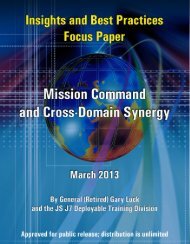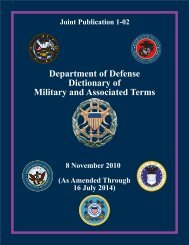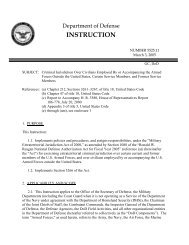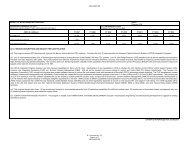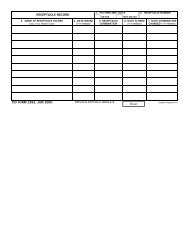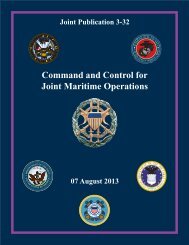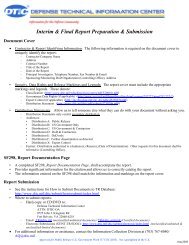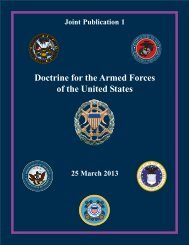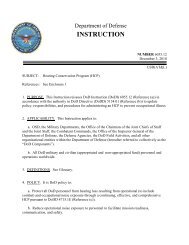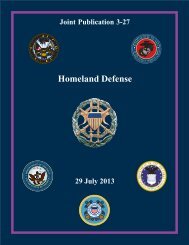JP 3-16, Multinational Operations - Defense Technical Information ...
JP 3-16, Multinational Operations - Defense Technical Information ...
JP 3-16, Multinational Operations - Defense Technical Information ...
Create successful ePaper yourself
Turn your PDF publications into a flip-book with our unique Google optimized e-Paper software.
Planning and Execution Considerations<br />
(4) Strategic objectives and broad tasks for the MNTF with guidance for<br />
termination or transition.<br />
(5) Participating nations and expected initial contributions.<br />
(6) Designated LN and supporting guidance.<br />
(7) Common security interests.<br />
(8) <strong>Multinational</strong> communications strategy.<br />
(9) Specific diplomatic, economic, and informational guidance and national<br />
limitations, concerns, or sensitivities.<br />
d. When dealing with partner nations, sensitivities and cultural differences must be<br />
recognized and acknowledged and procedures developed to mitigate or minimize additional<br />
conflict between nations. Some planning considerations for multinational operations may<br />
include culture, diet, alcohol consumption policies, male/female cohabitation policies, work<br />
hours, leave, and other duty limitations.<br />
e. Maintaining a cohesive MNF may require the MNF commander’s continual attention<br />
as nearly every action or event may impact national military and political interests and may<br />
compete for primacy with the MNF’s objective and end state. In some cases, national<br />
restrictions may seem wholly out of line with national contributions. This tension between<br />
national elements is not new, and commanders at all levels should be prepared to deal with it.<br />
As discussed earlier, nations join multinational efforts for a variety of reasons, both known<br />
and unknown. National will, popular support, and the perceived achievement of stated<br />
objectives are just some of the factors that might influence continued national participation.<br />
However, thorough pre-mission preparation and planning can pay significant dividends later<br />
as the MNFC faces the challenge of maintaining a stable MNF.<br />
3. Mission Analysis and Assignment of Tasks<br />
a. The MNFC’s staff should conduct a detailed mission analysis. This is one of the<br />
most important tasks in planning multinational operations and should result in a revised<br />
mission statement, commander’s intent, and the MNFC’s planning guidance. As part of the<br />
mission analysis, force requirements should be identified; standards for participation<br />
published (e.g., training-level competence and logistics, including deployment, sustainment,<br />
and redeployment capabilities); and funding requests, certification procedures, and force<br />
commitments solicited from an alliance or likely coalition partners.<br />
b. Before the MNTF staff can develop proposed courses of action (COAs), the MNFC<br />
must conduct an estimate of the situation. This will allow the MNFC to analyze, in an<br />
organized manner, the many factors that will affect the accomplishment of the assigned<br />
mission(s). This estimate should address the respective capabilities, political will, and<br />
national interests of the MNTF components. Additionally, expected interagency<br />
contributions and involvement of each nation should be addressed. This is a critical step as<br />
each nation determines its contribution to the operation. National force commitments, even<br />
III-5



